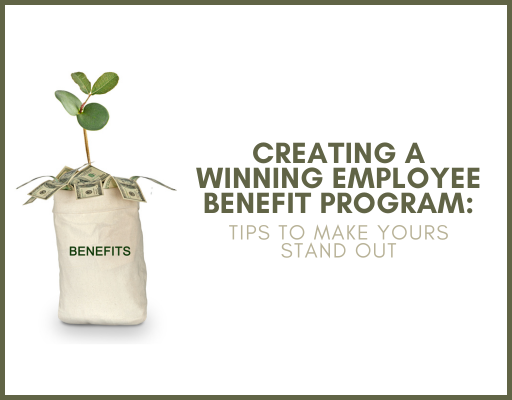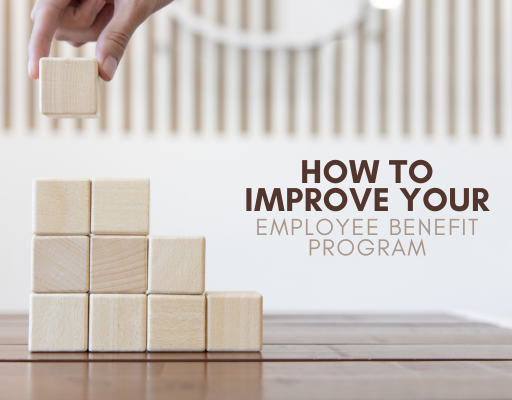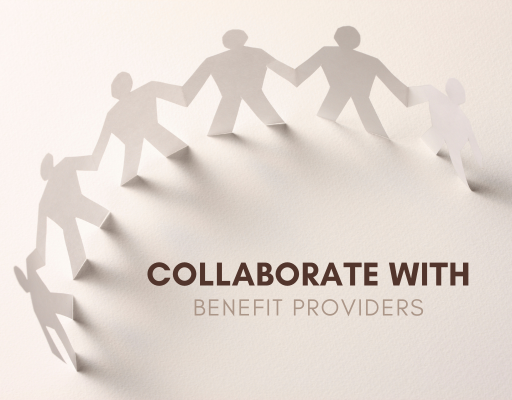Imagine you’re throwing a lavish dinner party for your closest friends. You’ve prepared an exquisite five-course meal, complete with appetizers, entrées, and desserts. The table is set with your finest china and sparkling crystal glassware. The room is filled with the pleasant aroma of delicately seasoned dishes. Your guests arrive, their eyes sparkling with anticipation. They sit down, eager to dive into the feast you’ve prepared, only to find each dish is undercooked, bland, and barely edible. Disappointment washes over their faces as they push their plates away. A dinner party disaster.

Similarly, your employee benefit program is the meal you serve to your team. If it’s poorly designed or lacks essential ingredients, your employees will be just as disappointed as your dinner guests. As a business owner, it’s crucial to create a program that is not only enticing but also retains and nurtures your workforce. Just like a successful dinner party, it requires careful planning and thoughtful execution.
Why Employee Benefit Programs Matter
As the famous saying goes, “Take care of your employees, and they’ll take care of your business.” Providing a robust employee benefit program is essential for attracting and retaining top talent in today’s competitive job market. Benefits play a significant role in job satisfaction, employee morale, and overall productivity.
A generous and well-constructed employee benefit program not only attracts and retains top talent but also boosts overall employee satisfaction, engagement, and productivity. When employees feel valued and supported, they are more likely to be committed to their work and the organization’s success. This, in turn, fosters a positive work environment and enhances team collaboration, resulting in better business outcomes.
A comprehensive benefits package can significantly contribute to the physical, mental, and financial well-being of your employees. By addressing their needs and concerns, you can help them achieve a healthy work-life balance and reduce stress, which ultimately leads to increased motivation and higher job satisfaction.
Furthermore, offering a comprehensive benefits package can enhance your company’s reputation and brand image, making it an employer of choice for top talent.

How to Improve Your Employee Benefit Program
1. Assess your current benefits program.
Analyze what you currently have and see what gaps you may have in your current benefits package that can be improved.
2. Listen to your employees.
Your employees are the best source of information when it comes to understanding their needs and preferences. Conduct regular surveys, focus groups, or one-on-one discussions to gain insights into what matters most to them. This will enable you to make informed decisions about which benefits to offer, adjust, or eliminate.
3. Stay current with industry trends.
As the business landscape evolves, so do the needs and expectations of employees. Keep abreast of industry trends and best practices to ensure that your benefit program remains competitive and relevant. This may involve attending industry conferences, subscribing to relevant newsletters, or participating in professional networking groups.
4. Collaborate with benefit providers.
Work closely with your benefit providers to ensure that you are getting the best value for your investment. This may involve negotiating better rates, exploring new plan options, or streamlining administrative processes. By maintaining a strong relationship with your providers, you can ensure that your program is cost-effective and optimized for your workforce.

5. Offer personalized benefits.
Today’s workforce is diverse, with varying needs and preferences. To cater to this diversity, consider offering personalized benefits that allow employees to choose the options that best suit their individual circumstances. This can be achieved through flexible spending accounts, cafeteria-style plans, or tiered benefit offerings. The benefits may include health insurance, paid time off, flexible work arrangements, life insurance, pet insurance, disability insurance, legal representation, 401K retirement plan, and professional development opportunities. Consider offering a variety of options within each category, allowing employees to tailor their benefits package to their unique needs and preferences. You can offer these types of benefits even if you only have a few employees on payroll.
6. Leverage technology.
Utilize technology to streamline benefit administration, communication, and enrollment processes. This can include implementing a user-friendly benefits portal, offering online enrollment, or providing access to digital tools and resources. By leveraging technology, you can reduce administrative burdens and make it easier for employees to access and manage their benefits.
7. Communicate the value of your benefits.
Ensure that your employees understand the full value of their benefits package. Provide clear and concise information about the offerings, how they work, and their costs. This can be achieved through employee handbooks, informational sessions, or a dedicated benefits portal. By effectively communicating the value of your benefits, you can boost employee appreciation and engagement.
8. Continuously evaluate and adjust.
Like any successful endeavor, your employee benefit program should be an ongoing work in progress. Regularly review your offerings and make adjustments based on employee feedback, industry trends, and your company’s financial situation. By staying proactive and responsive to change, you can ensure that your program remains relevant and appealing to your workforce.
A well-designed and comprehensive employee benefit program is essential for attracting and retaining top talent, fostering job satisfaction, and driving business success. By assessing your current offerings, benchmarking against industry standards, and continuously evaluating and adjusting your program, you can ensure that your benefits package remains competitive and appealing to your workforce.
Just as you would carefully plan and execute a dinner party to impress your guests, you must also invest time and resources into creating an employee benefit program that meets the diverse needs of your team. By doing so, you will foster a positive work environment, enhance employee well-being, and ultimately, create a thriving and successful business.








